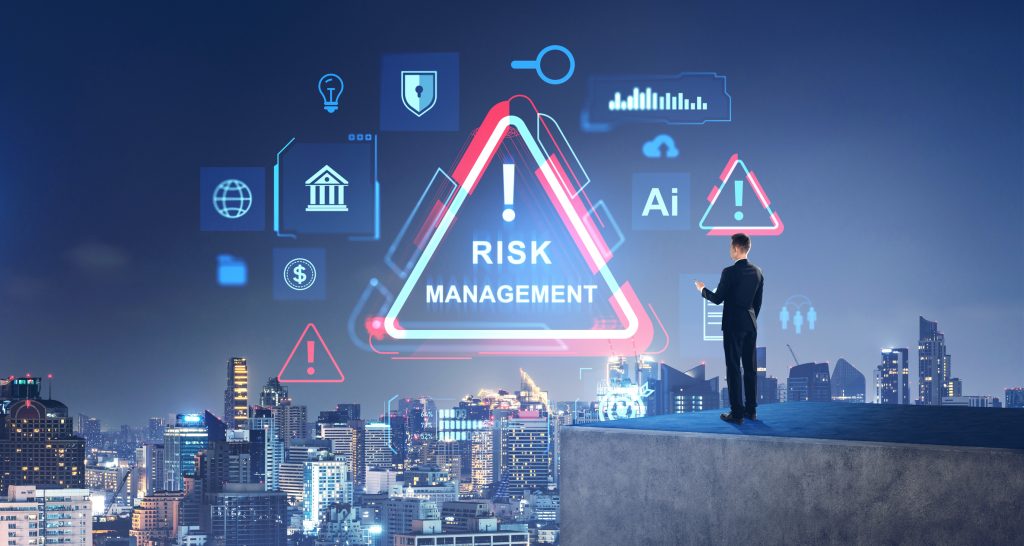In the industrial services world, risk is everywhere, from supply chain disruptions and extreme weather to cyber threats and compliance shifts. For too long, companies have relied on hindsight to manage those risks: reacting fast when something breaks or when regulations change. But today, artificial intelligence is turning risk management from reactive to predictive.
AI gives leaders a new lens, one that can detect emerging risks, forecast potential failures, and help organizations make smarter, faster decisions before disaster strikes. In an industry where downtime costs thousands per hour and compliance errors can erode trust overnight; foresight isn’t a luxury. It’s survival.
The Three Dimensions of Industrial Risk
Every industrial services company faces some combination of these challenges:
1. Operational Risk
Equipment failure, technician shortages, supply chain delays, and downtime, all of which can cascade into lost revenue and damaged relationships.
2. Environmental Risk
Weather-related events are becoming more frequent and harder to predict, from hurricanes to wildfires to power grid instability.
3. Compliance & Safety Risk
Regulatory changes and complex reporting requirements add layers of operational risk. Non-compliance doesn’t just mean fines; it can mean loss of reputation.
The common thread across these risk categories is data. Every failure leaves a footprint, and every risk has a pattern. The challenge is having the systems and tools to detect those patterns early enough to act on them.
That’s where AI changes everything.
How AI Strengthens Risk Management
AI doesn’t replace good judgment; it amplifies it.
By learning from historical data and real-time inputs, AI models can predict, prevent, and mitigate risk in ways that were nearly impossible just a few years ago.
Here’s what that looks like in practice:
Predictive Maintenance & Downtime Prevention
AI algorithms can analyse vibration data, fuel usage, temperature fluctuations, and service logs to predict when a generator or system is likely to fail. Companies can schedule maintenance proactively instead of waiting for an emergency, saving time, money, and customer trust.
Disaster Preparedness & Response
AI-driven simulations can model storm paths, fire zones, or flood risks, helping companies stage technicians and inventory where they’ll be needed most. By integrating weather data with GIS mapping, service leaders can deploy faster, cover more ground, and minimize customer impact.
Compliance Automation
AI tools can continuously monitor data streams, flag anomalies, and create automated audit trails. This not only reduces human error but also allows compliance teams to focus on strategic improvements instead of paperwork.
AI doesn’t eliminate risk. But it transforms how companies see, manage, and prepare for it, shifting the mindset from “responding to what went wrong” to “preventing what could go wrong.”
The Human + AI Equation
Risk management will always depend on people, processes, and culture. AI is just one part of the equation, but it’s a powerful one when aligned with strong leadership and team collaboration.
AI can predict the storm, but it still takes human leadership to weather it.
For example, one of our clients uses predictive analytics to pre-stage service teams before storm warnings. When the storms arrived, they were already positioned — protecting customers, reducing downtime, and safeguarding their brand reputation. That’s the difference between reacting to disruption and anticipating it.
Building Your AI-Driven Risk Strategy
If your risk management still relies on spreadsheets or “we’ll fix it when it breaks” thinking, it’s time for a mindset shift. Here’s where to start:
- Audit Your Data – Identify what you’re currently tracking and where the gaps are.
- Start Small – Pilot AI in one key area: downtime prediction, disaster response, or compliance monitoring.
- Empower Your Teams – Train employees to understand and trust AI insights. The best systems fail when people don’t use them.
- Integrate, Don’t Isolate – Embed AI into existing workflows so insights lead directly to action.
- Measure ROI – Track your outcomes in reduced downtime, faster response, and fewer compliance incidents.
AI success doesn’t happen overnight — it’s built through consistent learning and leadership alignment.
The Future of Resilience
In a world where disruption is unavoidable, resilience has become a key business strategy. The companies that succeed in 2026 and beyond won’t be the ones with the most advanced technology; they’ll be the ones using AI wisely to forecast risks, empower their teams, and safeguard their customers.
If your risk management plan still lives in binders and spreadsheets, it’s time to evolve.
Let’s build a smarter, more resilient future that turns uncertainty into opportunity.


